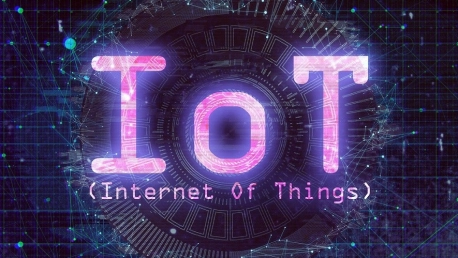With the advent of the Internet of Things (IoT), sensors, edge-computing, AR/VR, and wireless technologies, the Digital Twin is becoming an extremely valuable and cost-effective tool in many industries, one that’s not only financially viable, but also useful for data collection and analysis. Lately, digital twin technology has moved beyond manufacturing and into the merging worlds of the Internet of Things, artificial intelligence, and data analytics.
What Is Digital Twin Technology
Digital Twin refers to the ability to virtually represent and optimize a real-life product or process. Ever since the invention of the first computers, people have tried to build abstract models of various problems they faced with the intention of using processing power to find answers.
The Digital Twin concept is not new. In fact, it’s been more than 50 years since NASA started using the idea of “Twins” for their space exploration vehicles in the 1960s. Thanks to the “twin” located on Earth, engineers on the ground explored possible scenarios and offered life-saving solutions to the Apollo 13 astronauts in 1970. Many years later, Michael Grieves of the Florida Institute of Technology (USA) first applied the Digital Twin concept to manufacturing and, in 2002, introduced it to the public during a presentation at the University of Michigan (USA).
With Digital Twin, conception, design, run simulations, and manufacturing are performed simultaneously, based on customer specifications and incorporating real-time feedback from products in use that communicate with the development team.
Why Digital Twin Is an Important Part of Industry 4.0
Technological advancements, such as processing power, storage capacity, and the multitude of developed applications, have led to Industry 4.0. This industrial revolution will mark the next decades and it will manifest itself in the development and widespread use of cyber-physical systems (CPS). CAD-CAM-CAE solutions have obviously been around for decades, but Digital Twin is the next level.
Digital Twin is about capturing, structuring, and synchronizing all product data, from idea, design, manufacturing, launch, use, maintenance, and all the way through to disposal and recycling.
It enables a continuous optimization process spanning all phases of a product’s lifecycle. Virtual simulations of design and functionality developed in parallel with manufacturing planning lead to a much faster time to market, significantly reduced costs, higher quality, and, of course, better customer satisfaction.
Digital Twin also means having a collaborative platform where everyone has access to the right information in real-time and everyone can make informed decisions. Many of the decisions can be automated through M2M (machine-to-machine) protocols and AI (artificial intelligence) algorithms.
Digital Twin integrates Product Lifecycle Management, Digital Manufacturing, Manufacturing Execution System solutions, as well as IoT components that communicate feedback from ongoing manufacturing processes or products in service.
Digital Twin Use Cases – From Formula 1 Cars to Power Plants
Formula 1
Peter van Manen, former CEO and Vice President of McLaren Applied Technologies, a subsidiary of McLaren Group, explained that Digital Twins are like “a puppy you get for Christmas – it’s great but you have to keep looking after it if you want to get the best out of it”. “We, in the technical team, get a lot of data, like how the tyres are behaving, how the car is working or what we need to do to have the shortest pit stop, along with a lot of other telemetry. Essentially, Digital Twin is collecting data that we can use to make our cars faster,” van Manen said.
Smart Cities
In 2018, European software company Dassault Systemes finished building a Digital Twin of Singapore, known as 3DEXPERIENCECity.
Having a digital copy allows city managers to optimize energy consumption or further adjust traffic while, for example, allowing shop owners to adjust their hours in order to covervarious public events, such as concerts, football matches etc.
Other examples of Digital Twins for cities and/or their infrastructure are the transport system of New York City or the system implemented by Land Use Victoria, Australia.
Healthcare
The medical sector benefited from Digital Twin technology in areas such as organ donation, surgery training, and de-risking of procedures. Systems have also modeled the flow of people through hospitals and tracked where infections may exist and who may be in danger through contact. Philips is working on building bio-physical models using comprehensive patient data.
Retail
Digital Twin is used in the retail sector, as it allows experts to model and augment the customer experience, whether at the level of entire shopping centers or individual stores. French supermarket chain Intermarché is using data from shelves equipped with IoT sensors to create Digital Twins of brick-and-mortar stores, allowing managers to receive important real-time information about stocks.
Power Plants
General Electric has created an advanced Digital Twin that integrates analytical models of the various components of a power plant and thus measures asset integrity, wear and tear, and performance against various indicators and customized business objectives. The Digital Twin runs on an industrial IoT (IIoT) platform called Predix™, designed to handle large volumes of sensor data, manage and run analytical models, and also run business rules-based operating programs.
These are just a few applications of the technology. The list includes fields like aerospace, automotive, self-driving car development, supply chain, construction, and many more.
Like many other emerging technologies, Digital Twin will continue to need support from other technologies that are now being developed, as well as integration into more dynamic ecosystems. Once these technologies mature, Digital Twin will enter the era of productivity and widespread adoption, while new concepts such as Digital Triplets (one Digital Twin for every product manufactured) will become feasible and bring new business opportunities.









